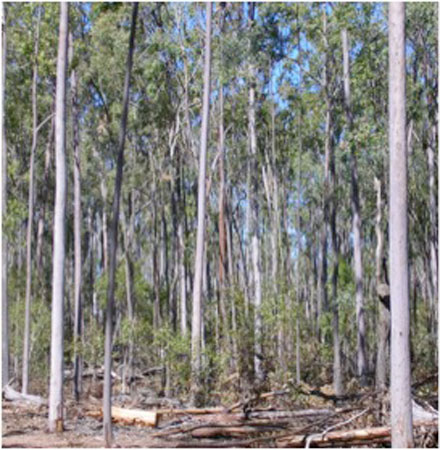 Private forests in New South Wales should be actively managed to produce economic benefits and provide better biodiversity than the state’s conservation reserves, according to a regional timber group. The Eden-based South East Timber Association (SETA), in a submission to the NSW Government, said active management included grazing, low intensity fuel reduction burning and occasional harvesting operations. Source: Philip Hopkins for Timberbiz
Private forests in New South Wales should be actively managed to produce economic benefits and provide better biodiversity than the state’s conservation reserves, according to a regional timber group. The Eden-based South East Timber Association (SETA), in a submission to the NSW Government, said active management included grazing, low intensity fuel reduction burning and occasional harvesting operations. Source: Philip Hopkins for Timberbiz
SETA’s report was submitted as part of the NSW Private Native Forest Code of Practice Review.
SETA’s key recommendations included:
- Local Land Services should not inhibit active management that delivers a viable commercial outcome and biodiversity outcomes that are superior to large tracts of the NSW conservation reserve system.
- If private native forest owners can show that low intensity burns can reduce wildfire risk and produce better biodiversity, the code should not totally exclude fire from harvest exclusion zones.
- The definition of “clearing” should be clarified to only cover permanent clearing of native vegetation; harvesting, regeneration, thinning and related operations should be fully covered by the definition of “forestry operations”.
- Thinning should not be defined as regeneration.
- Private and public forestry practitioners had long become aware that Old Growth forest had long been inadequately mapped. Thus all NSW forest should be remapped to establish the actual location and area of old growth, and also possibly of rainforest and endangered ecological communities.
SETA said in line with policy on public native forests, private forests had been increasingly regulated to stifle active and adaptive management.
However, private forests still provided at times “a stark contrast to an increasingly unmanaged public forest estate” in various conservation reserves.
SETA said permanent protection assumed that any form of disturbance by fire or machines to soil and vegetation was environmentally harmful.
Academic activists had promoted a “terra nullius” view of Australia’s forests, justifying non-disturbance forest management.
“High quality wilderness” was actually an artefact of European neglect.
“In most cases, so-called wilderness was actively managed by Aboriginal people. Consequently, much of the conservation reserve system seeks to preserve slabs of land covered by native vegetation, altered in structure, species composition and ecological function,” the submission said.
SETA said fuel reduction burns had been increasingly regulated over the past 20 years, with minimum return times. The guidelines had increasingly adopted the terra nullius view of Australian ecology that denied Aboriginal fire management.
“Regulatory frameworks are enforcing an exclusion of managed fire, rather than intelligent application of managed fire,” SETA said.
The guidelines had become prescriptions, with much longer periods between burns than they should be.
“Consequently, modern fuel reduction burns often have higher than desirable intensity, as agencies try to apply fire in historically high forest fuel loads,” SETA said.
Specified return times generally precluded “top up” burns in following years. “The loss of regular, managed fire across the landscape is leading to an escalation in the frequency of wildfires across Australia.”
SETA said the Private Native Forestry Code of Practice for southern NSW largely referenced fire or burning in relation to banning fire from harvest exclusion zones.
“This general exclusion ensures that any plants and fungi that respond to low intensity burns will decline in number in the exclusion zones and may not give the best environmental outcome, particularly if the area is impacted by wildfire,” SETA said.
“The perversity of fire exclusion is that when a wildfire inevitably occurs, the most environmentally sensitive areas, with high fuel loads, will burn most intensely.”
SETA said the private native forestry code definition of “clearing” resulted in an overstatement of the amount of permanent clearing undertaken in NSW each year. “Harvesting, regeneration and thinning is not permanent clearing,” SETA said. “The original authors of the definition of clearing were either totally ignorant of the outcomes of native forest harvesting or else have sought to deliberately overstate and so, mislead the Australian public on the amount of permanent clearing undertaken each year.”
Thus, the definition of clearing should be clarified, according to SETA.







